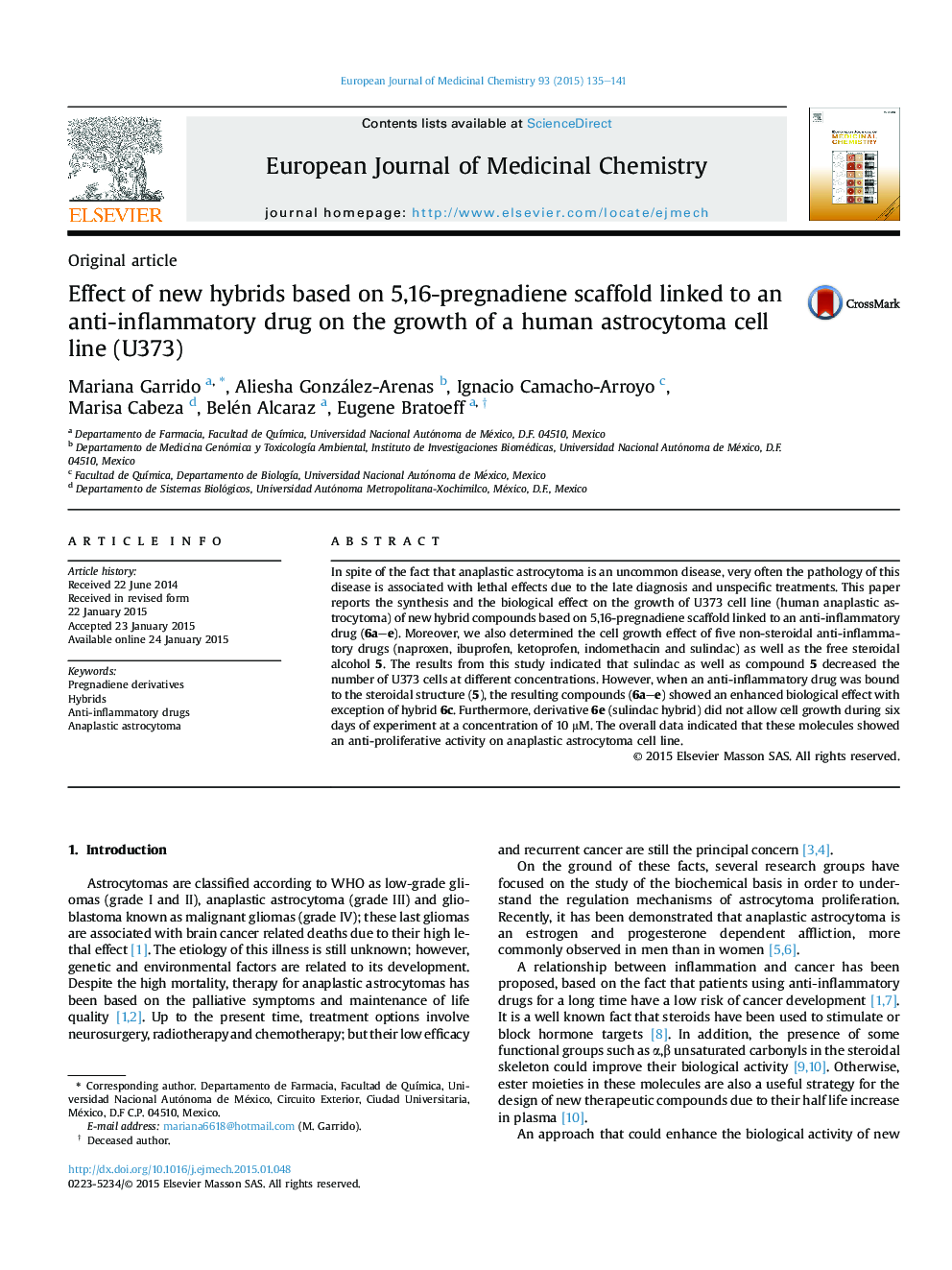| کد مقاله | کد نشریه | سال انتشار | مقاله انگلیسی | نسخه تمام متن |
|---|---|---|---|---|
| 1395360 | 1501123 | 2015 | 7 صفحه PDF | دانلود رایگان |

• Sulindac as well as compound 5 decreased the number of U373 cells at different concentrations.
• Sulindac hybrid 6e did not allow cell growth during six days of experiment at 10 μM.
• The covalently bound anti-inflammatory drug to the steroid enhanced the biological activity.
In spite of the fact that anaplastic astrocytoma is an uncommon disease, very often the pathology of this disease is associated with lethal effects due to the late diagnosis and unspecific treatments. This paper reports the synthesis and the biological effect on the growth of U373 cell line (human anaplastic astrocytoma) of new hybrid compounds based on 5,16-pregnadiene scaffold linked to an anti-inflammatory drug (6a–e). Moreover, we also determined the cell growth effect of five non-steroidal anti-inflammatory drugs (naproxen, ibuprofen, ketoprofen, indomethacin and sulindac) as well as the free steroidal alcohol 5. The results from this study indicated that sulindac as well as compound 5 decreased the number of U373 cells at different concentrations. However, when an anti-inflammatory drug was bound to the steroidal structure (5), the resulting compounds (6a–e) showed an enhanced biological effect with exception of hybrid 6c. Furthermore, derivative 6e (sulindac hybrid) did not allow cell growth during six days of experiment at a concentration of 10 μM. The overall data indicated that these molecules showed an anti-proliferative activity on anaplastic astrocytoma cell line.
Figure optionsDownload as PowerPoint slide
Journal: European Journal of Medicinal Chemistry - Volume 93, 26 March 2015, Pages 135–141